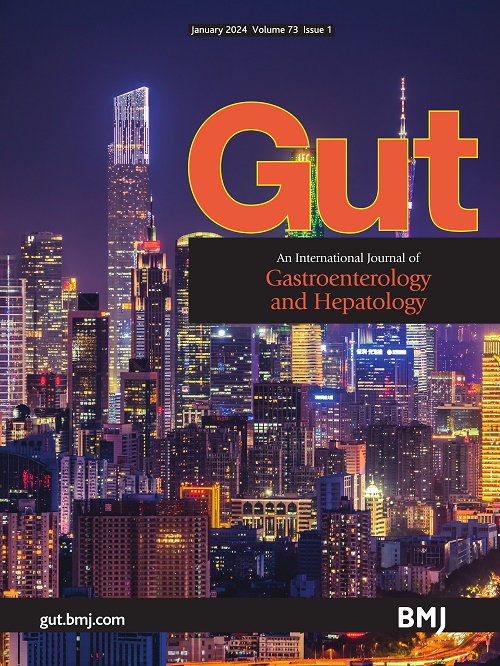Crosstalk between liver sinusoidal endothelial cells and hepatocytes via IL-1α–IL1R1 axis exacerbates ischaemia/reperfusion injury in aged livers
IF 25.8
1区 医学
Q1 GASTROENTEROLOGY & HEPATOLOGY
引用次数: 0
Abstract
Background With population ageing, elderly patients account for a growing proportion of hepatic surgery recipients. Hepatic ischaemia-reperfusion injury (HIRI) is a major cause of postoperative liver dysfunction, particularly in aged livers, yet its mechanisms remain poorly understood. Objective We aimed to elucidate critical cellular interactions and molecular mechanisms underlying aggravated HIRI in aged livers to uncover therapeutic targets. Design Single-cell RNA sequencing and spatial transcriptomics were performed on liver tissues from humans, rats and mice across ages to define key cell types and intercellular signalling. HIRI and liver transplantation animal models, primary cell co-cultures and adeno-associated virus-mediated gene knockdown were used to prove cellular function and mechanisms. Neutralising antibody was used to assess therapeutic efficacy. Results Integrated analyses revealed a significant enrichment of senescent liver sinusoidal endothelial cells (LSECs) in aged livers, with the most prominent age-associated increase in crosstalk with hepatocytes, thereby promoting inflammation. Further investigation demonstrated increased transcriptional activity of myeloid ecotropic viral integration site 2 (MEIS2) in senescent LSECs, driving interleukin (IL)-1α expression via promoter binding and the IL-1α–IL1R1 axis subsequently activated NF-κB signalling in hepatocytes, enhancing inflammatory cytokine production. Interestingly, LSECs were also most strongly influenced by hepatocytes during liver ageing, as hepatocyte-derived TNF-α further enhanced MEIS2 transcriptional activity in LSECs, establishing a proinflammatory positive feedback loop. Furthermore, we confirmed that neutralising IL-1α effectively alleviated HIRI in aged livers. Conclusion Our findings identify the crosstalk between LSECs and hepatocytes in aged livers aggravating HIRI via MEIS2/IL-1α/IL1R1/TNF-α axis, suggesting that IL-1α neutralising antibody can be exploited as a promising therapeutic strategy for aged HIRI. Data are available upon reasonable request. The data sets analysed during the current study are available from the corresponding author on reasonable request. This study did not use any unique codes, and all analyses were performed in R and Python using standard protocols from previously published packages. All primers and other nucleic acid sequences are provided in the [online supplemental Table 1][1]. [1]: #DC16肝窦内皮细胞与肝细胞间经il -1α - il - 1r1轴的串扰加重老年肝脏缺血/再灌注损伤
背景随着人口老龄化,老年患者在肝脏手术患者中所占比例越来越大。肝缺血再灌注损伤(HIRI)是术后肝功能障碍的主要原因,特别是在老年肝脏中,但其机制尚不清楚。目的:阐明老年肝脏HIRI加重的关键细胞相互作用和分子机制,以发现治疗靶点。对不同年龄的人类、大鼠和小鼠的肝组织进行单细胞RNA测序和空间转录组学,以确定关键细胞类型和细胞间信号传导。HIRI和肝移植动物模型、原代细胞共培养和腺相关病毒介导的基因敲低被用来证明细胞功能和机制。用中和抗体评价疗效。综合分析显示,衰老肝脏中衰老肝窦内皮细胞(LSECs)显著富集,其中最显著的是与肝细胞串扰的年龄相关增加,从而促进炎症。进一步的研究表明,衰老LSECs中髓系亲生态病毒整合位点2 (MEIS2)的转录活性增加,通过启动子结合驱动白细胞介素(IL)-1α的表达,IL-1α - il1r1轴随后激活肝细胞中的NF-κB信号传导,增强炎症细胞因子的产生。有趣的是,在肝脏衰老过程中,肝细胞对LSECs的影响也最强烈,因为肝细胞来源的TNF-α进一步增强了LSECs中MEIS2的转录活性,建立了促炎正反馈回路。此外,我们证实,中和IL-1α可有效减轻老年肝脏的HIRI。结论通过MEIS2/IL-1α/ il - 1r1 /TNF-α轴,我们发现老年肝脏中LSECs与肝细胞之间存在串扰,从而加重了HIRI,提示IL-1α中和抗体有望成为老年HIRI的治疗策略。如有合理要求,可提供资料。本研究中分析的数据集可应通讯作者的合理要求提供。这项研究没有使用任何独特的代码,所有的分析都是在R和Python中使用先前发布的包中的标准协议进行的。所有引物及其他核酸序列见[在线补充表1][1]。[1]: # DC16
本文章由计算机程序翻译,如有差异,请以英文原文为准。
求助全文
约1分钟内获得全文
求助全文
来源期刊

Gut
医学-胃肠肝病学
CiteScore
45.70
自引率
2.40%
发文量
284
审稿时长
1.5 months
期刊介绍:
Gut is a renowned international journal specializing in gastroenterology and hepatology, known for its high-quality clinical research covering the alimentary tract, liver, biliary tree, and pancreas. It offers authoritative and current coverage across all aspects of gastroenterology and hepatology, featuring articles on emerging disease mechanisms and innovative diagnostic and therapeutic approaches authored by leading experts.
As the flagship journal of BMJ's gastroenterology portfolio, Gut is accompanied by two companion journals: Frontline Gastroenterology, focusing on education and practice-oriented papers, and BMJ Open Gastroenterology for open access original research.
 求助内容:
求助内容: 应助结果提醒方式:
应助结果提醒方式:


